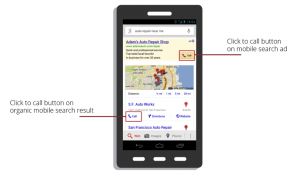Thanks to the impeachment hearings, “pizzazz” has gotten a lot of media exposure lately. Political analysts on one side claim the legal proceedings lacked the “pizzazz” necessary to hold the public’s attention. The other side claims the facts speak for themselves, pizzazz completely unnecessary.
I’m not going to weigh in on the debate about whether pizzazz belongs in our legal system or not, but I do want to address the slightly less-heated, but ongoing debate around whether pizzazz belongs in sales presentations.
Like our political parties, one camp of sellers insist that “the facts speak for themselves.” While the other camp is always looking for more ways to package or deliver their message in a way that makes a greater impact on their audience. In other words, they are looking to add some “pizzazz” to their presentations.
Why Should you Put some Pizzazz in your Presentation?
What is pizzazz anyway?
Pizazz is definfed as “the quality of being exciting or attractive.”
Based on this definition, it seems to me that showing a product or service in its best possible light (making it attractive) or getting a prospect excited about what it can do for them is part of a salesperson’s role. If facts could do that on their own, most salespeople would be out of a job.
Being boring doesn’t make you credible.
If you keep your message relevant and always take into account your audience’s interests, tolerance level and time, adding pizzazz to your presentation can have nothing but upside for your bottom line.
5 Ways to Put Some Pizzazz in your Presentation
- Defy Expectations:
Most presentations or pitches start off with the salesperson talking about their company. Not only has your prospect heard it all before, it has very little to do with what your prospect is interested in. Instead of starting with “about us,” defy your audience’s expectations and start with what’s of most interest to them. This could be an end result, a customer success story or an insight. This will immediately differentiate you and focus your audience’s attention. - Tell a story:
As Seth Godin said, people don’t buy goods and services, they buy stories and magic. A story can bring your product or solution to life and help your buyer connect with it on an emotional level. And because stories are “stickier” than facts and figures, they are excellent for making sure your message is remembered if you have a longer buying cycle, like so many complex solutions today. - Be expressive:
There’s no law that says facts have to be delivered in a dry, flat demeanor (although you’d never know it by watching many presentations!) Energy is contagious, so let your passion or enthusiasm for your product shine through in your voice and body language.
saSles presentation
Most people tamp down their personality and energy in business conversations – making them indistinguishable from others. Expressing your unique personality makes for a more engaging presentation and more authentic connections. - Use Props:
Bringing a pet or a favorite toy to school for show and tell is often our earliest experience using a prop. Why didn’t the teacher just have you tell a story? Because teachers know that a verbal story alone won’t hold the attention of a room full of children. While your prospects are likely a bit older, using a prop is still one of the most powerful ways to gain an audience’s attention and improve recall.For example, say you have a product that replaces the need for numerous other products. You could show a smartphone to quickly illustrate how a single device folds multiple functions into one convenient package. But whatever you use, make sure it is relevant and your audience doesn’t have to work too hard to make the connection.
See examples of props and where to use them here. - Chose a Theme:
A theme underscores the central message of your presentation in a way that is meaningful and memorable for your customer. It often runs like a thread throughout your presentation, influencing your slide design, messaging and choice of stories and props.
Sales presentation training
The most effective presentation themes center around prospect’s objectives (growth, competitive advantage, innovation, etc.) and how you’re going to help them achieve it. Usually a theme can typically be described with a few words or a strong image, like a baseball visual for a “Swing for the Fences” theme.
Remember: Being boring doesn’t make you more credible. Even if you have a great product or service that provides value for their customers, a little pizzazz can keep customer’s engaged so they hear your message, make an impact so they can remember them, and excite them enough to want to take action.
Business & Finance Articles on Business 2 Community
(43)







